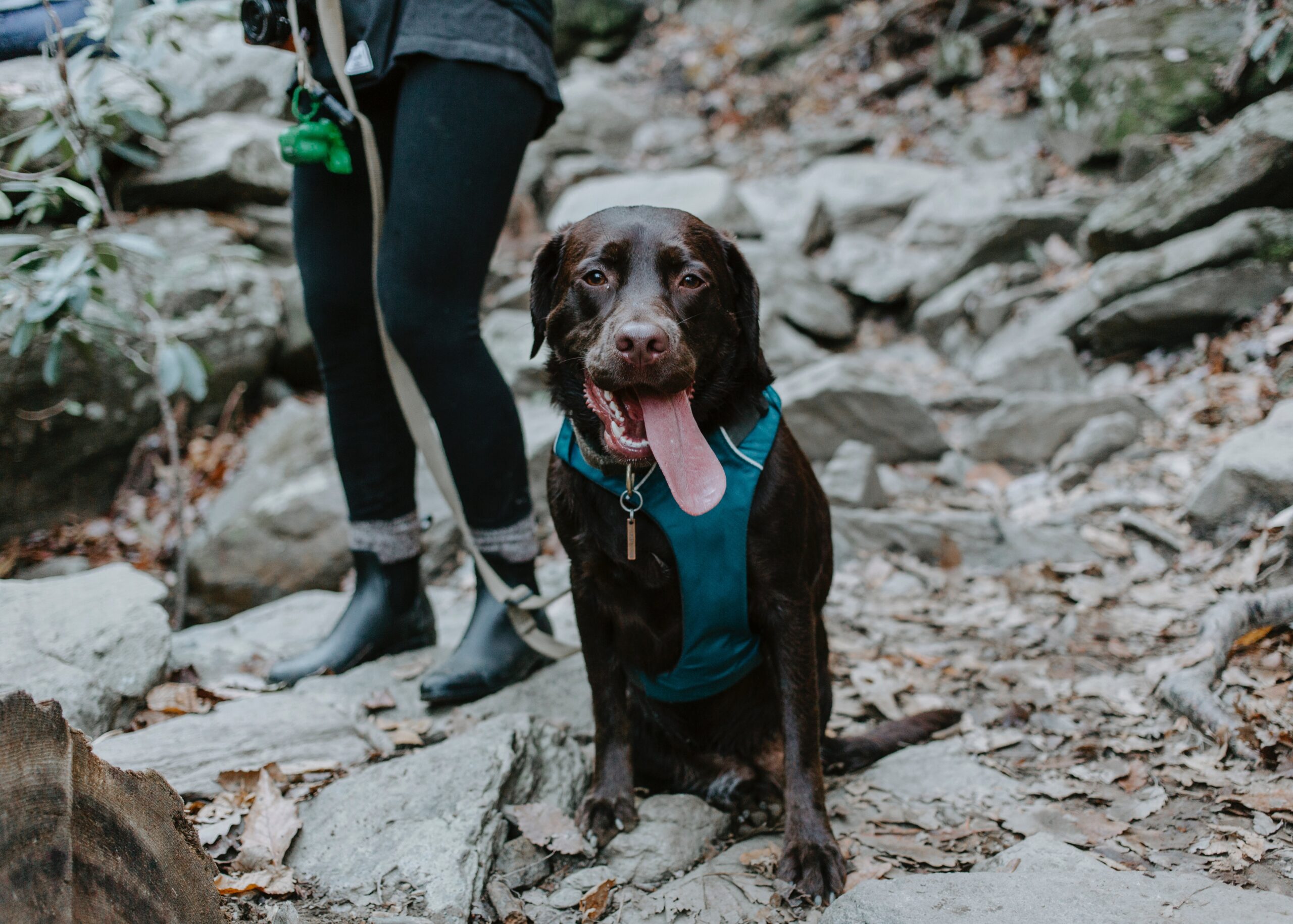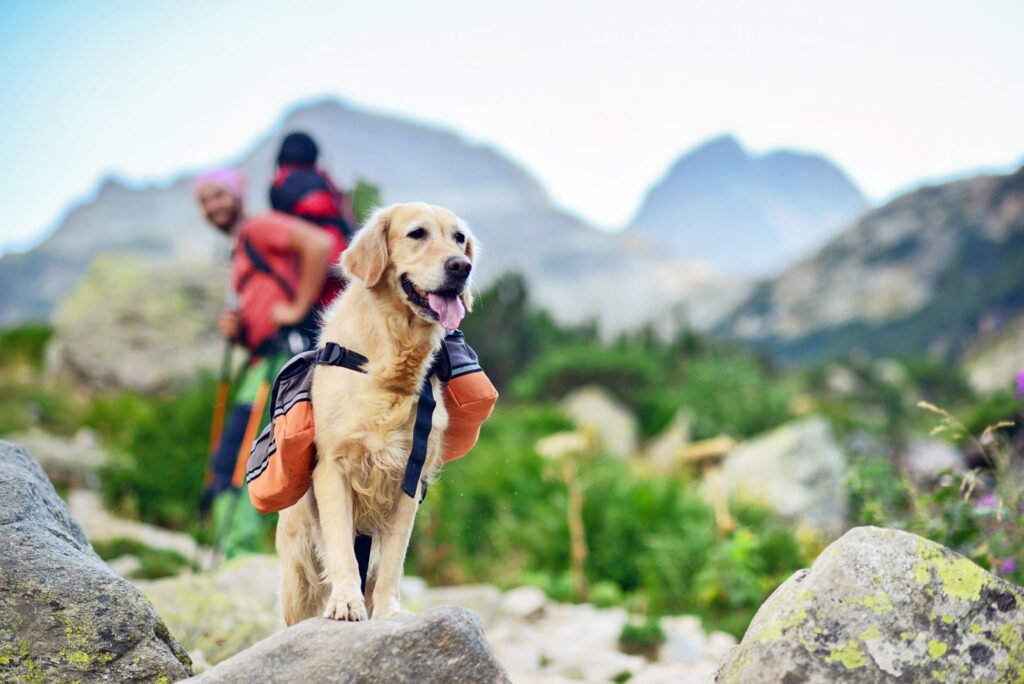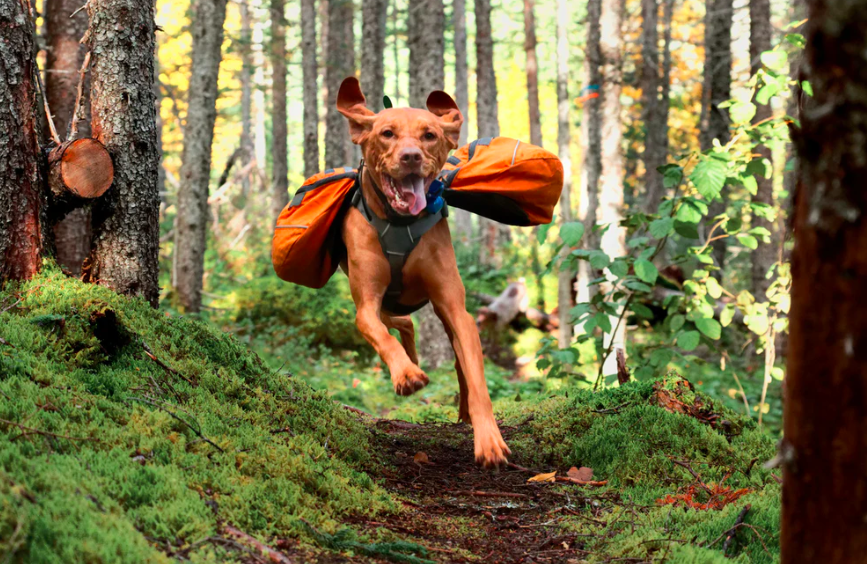
Hiking with Your Dog
Summer is ending. Autumn is near. Fall is a great time for hiking in the woods with your best friend! Most dogs love to hike. They really enjoy running, romping, rolling, and jumping in piles of dry leaves, not to mention all of the amazing scents of autumn for them to explore.

Let’s keep it safe though, no one wants their fun outing to turn into a nightmare! The best way to ensure good fun is to be prepared! Know your dog, know the area where you will be hiking and have a few items packed and ready for travel.
Before heading outdoors with your dog it is a good idea to consult your veterinarian. They can advise you on any vaccines or preventatives your pup may need.
Ok! Let’s get to know your dog. How athletic is your pooch? If your best friend is a couch potato you can’t expect him or her to suddenly hike rough terrain or long distances. Dogs need to train regularly to be fit. When planning your outing keep in mind your dog’s age, health, body condition, size, and hair coat.
Breed type is also important. Brachycephalic or “shmushy faced” dogs, Pugs and Boxers for example, can overheat or develop respiratory issues from overexertion. Cold weather breeds such as Huskies and Saint Bernards, can overheat on mildly hot days. Dogs were bred for different purposes. You don’t have to deny a lap dog a fun outing, but you may have to cater your trip to their capabilities.

Next, know the area where you’ll be hiking. Be aware of the terrain. Know where there are bodies of water or sudden drop-offs. If hiking in a public park it’s a good idea to look into the park’s rules. Most parks have leash laws intended to keep your dog, the natural environment, and wildlife safe. Rule or not, using a leash is a good idea. The wilderness is enticing to dogs but full of potential dangers. Insects, poisonous plants/mushrooms, contaminated water, and wild animals all pose a risk. It’s best to keep your dog close.
Here are some animals you may come upon while hiking.
Skunks– If sprayed by a skunk flush your dog’s eyes with cool clean water. Wash your dog with a combination of one quart of 3% hydrogen peroxide, 1/4 cup of baking soda, and 1 tsp of liquid dishwashing soap.
Porcupines– If your dog gets “quilled” seek veterinary help.
Opossum, Fox, Raccoon and less commonly Coyote, Mountain Lion, Bobcat, Bear– If tending to a bite wound rubber gloves should be worn to avoid contact with the wild animal’s saliva, seek veterinary care.
Venomous snakes- A bite from a venomous snake will require veterinary care as soon as possible, it is helpful if you are able to identify the type of snake. If a lower limb is bitten, a tourniquet placed above it may help stop the spread of venom.
Birds of prey– Keep your eyes on the sky. Large birds are capable of swooping down and grabbing very small dogs.
A few things you should bring with you on your hike are:
Water bowl and water
First aid kit– Include tweezers, gauze sponges, gauze rolls, non-stick bandages, medical tape, scissors, tourniquet, triple antibiotic ointment, pet safe anti-itch ointment, 10% betadine, 3% hydrogen peroxide, magnifying glass, rubber gloves, plastic syringe, thermometer, and a pocket-sized pet first aid book. After consulting with your veterinarian you may want to include Benadryl and Milk of Magnesia (absorbs ingested toxins) to be used as directed.
You can purchase one here on Amazon. This is the same one that our walkers keep in their cars.
Muzzle
Extra leash
Bath towel
Please don’t be put off by the list of potential hazards. The great majority of hikes are incident free! Hiking is a great treat for you and your dog, and well worth all of the prep time.